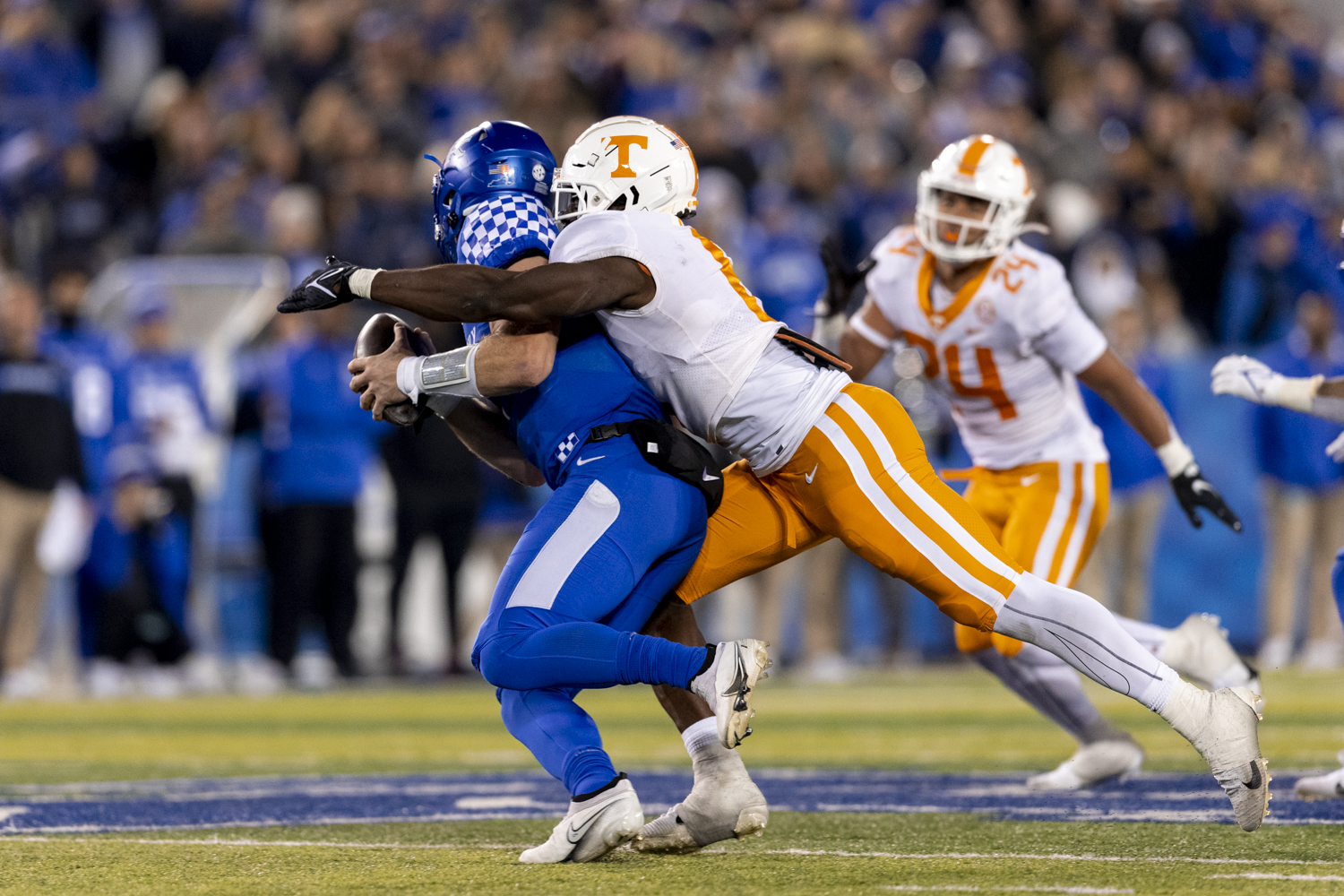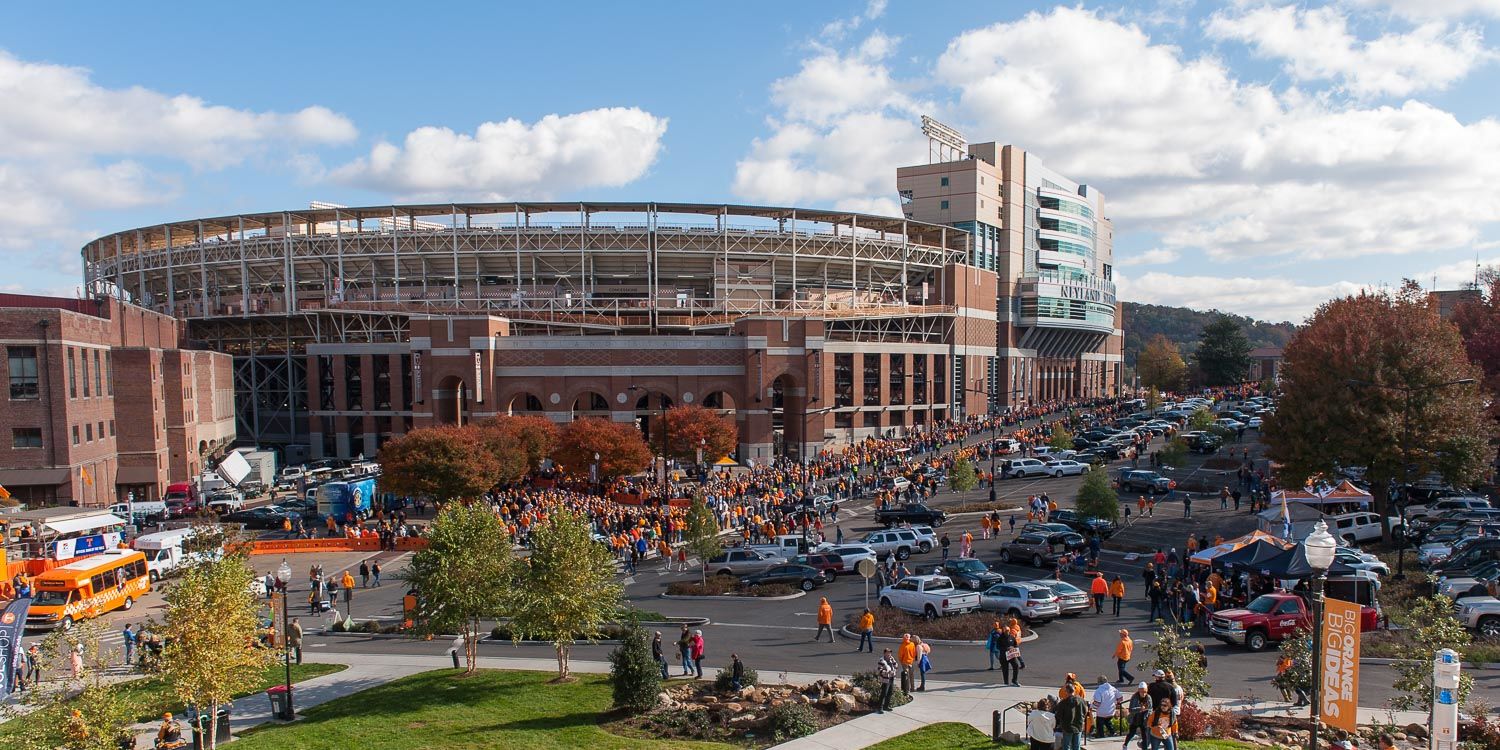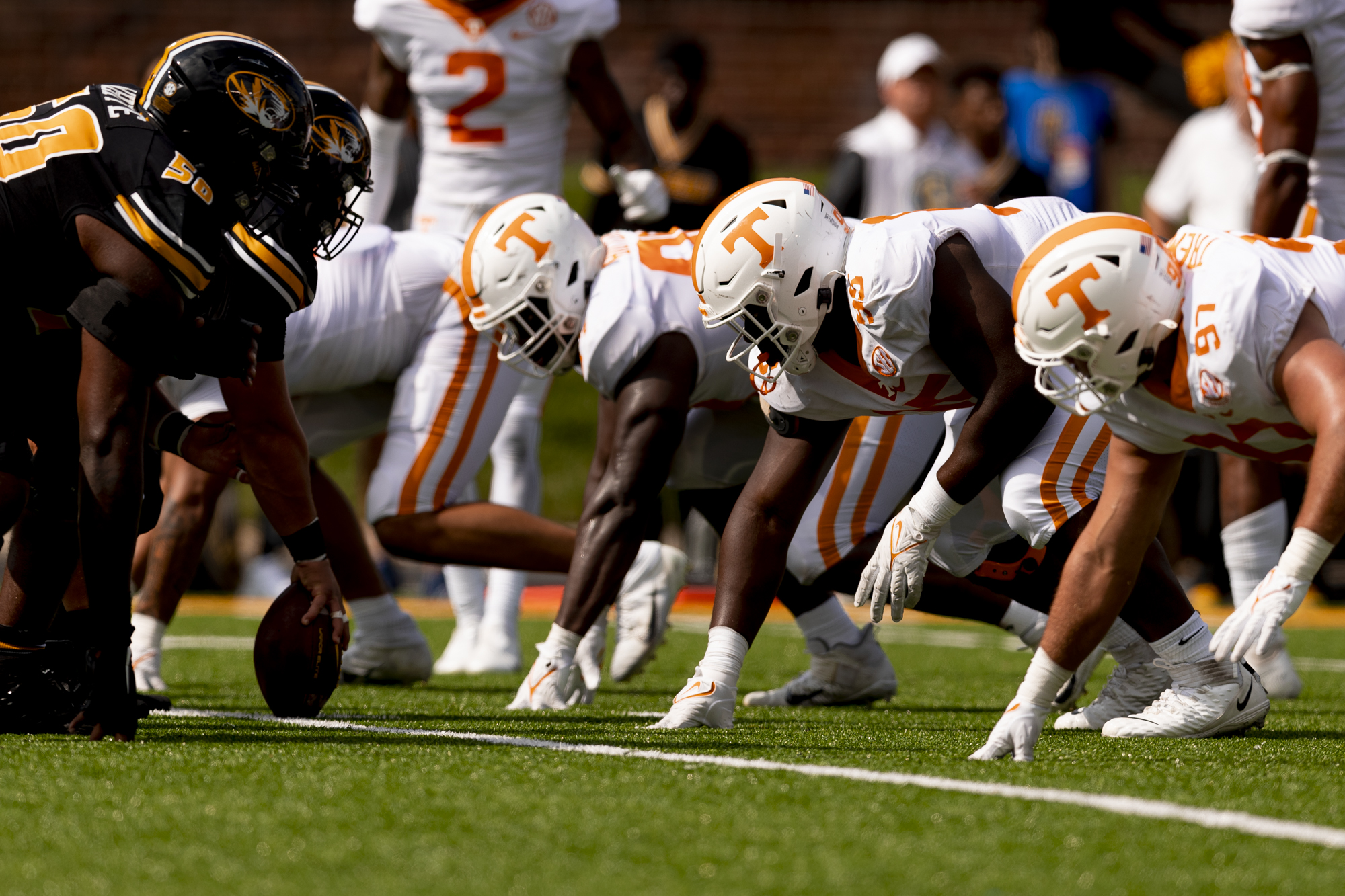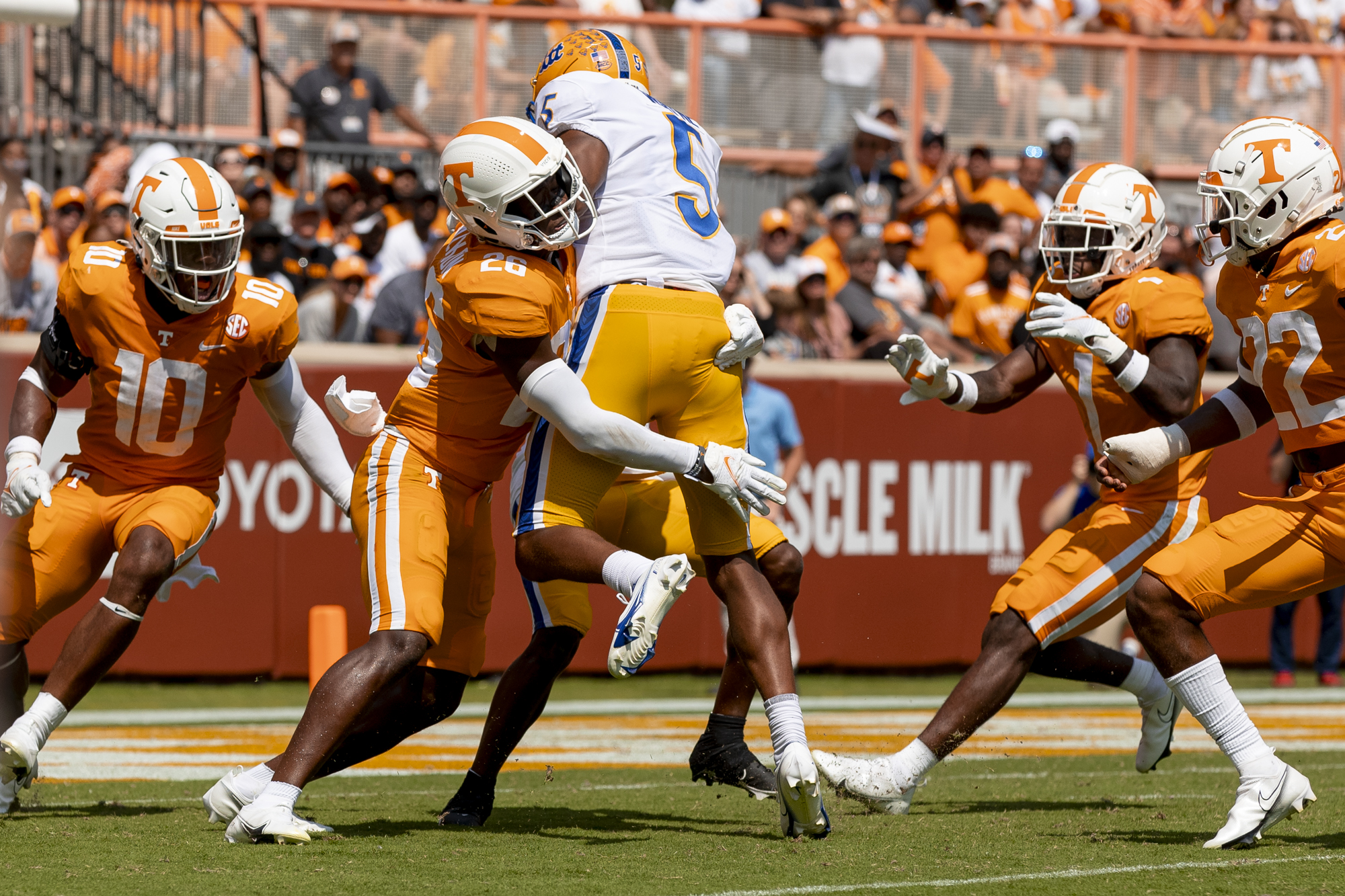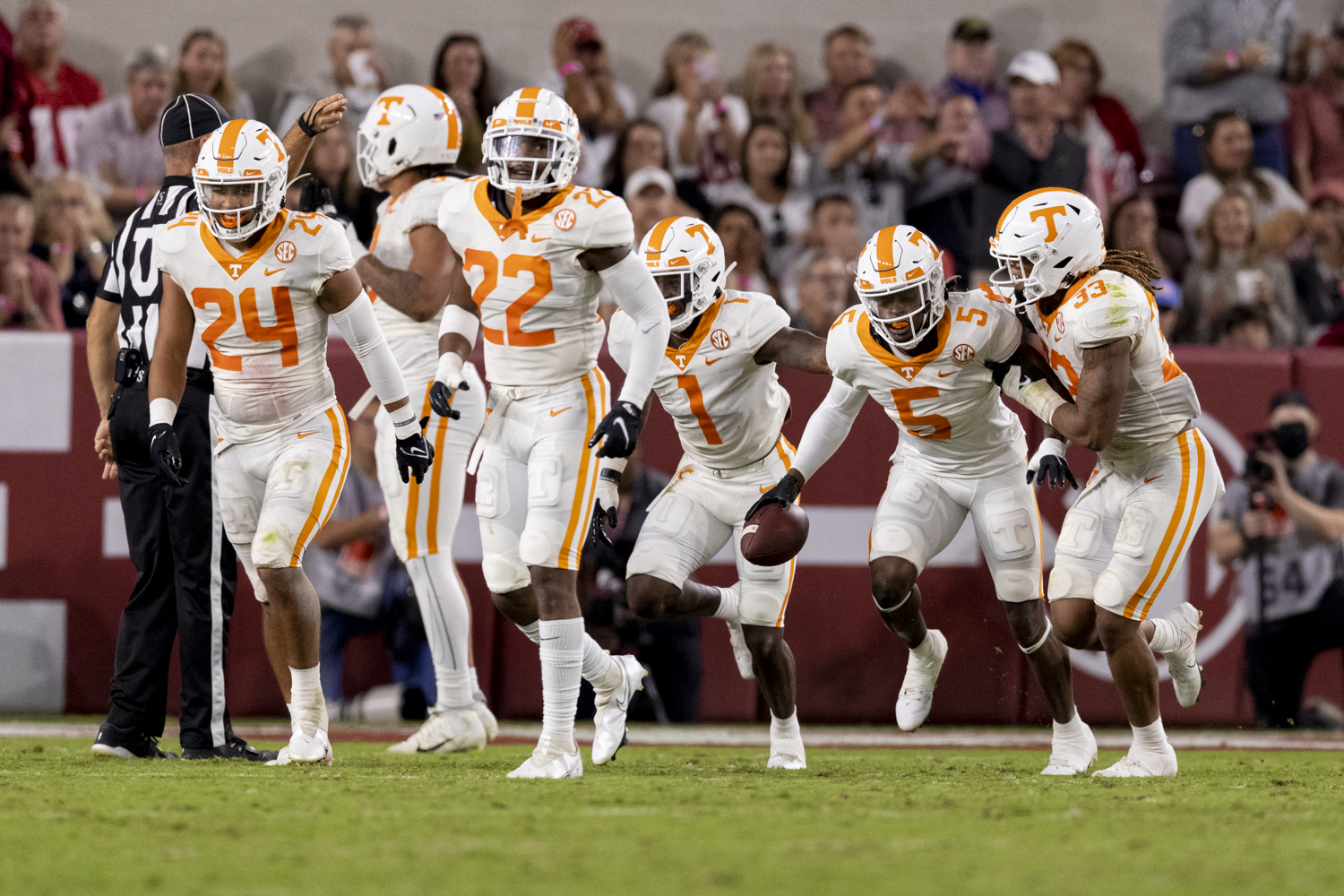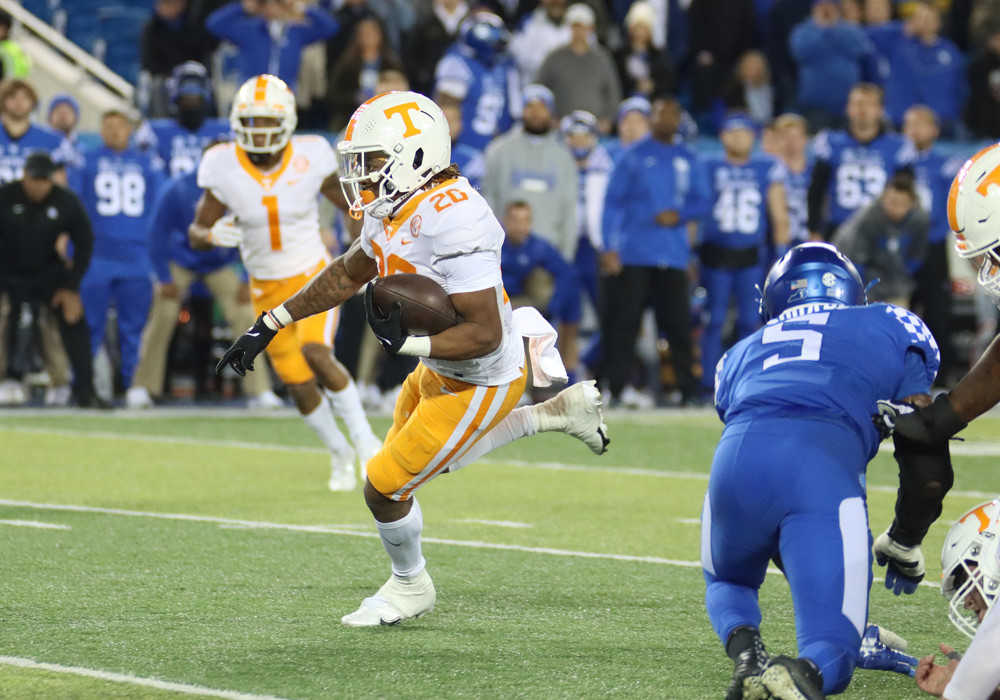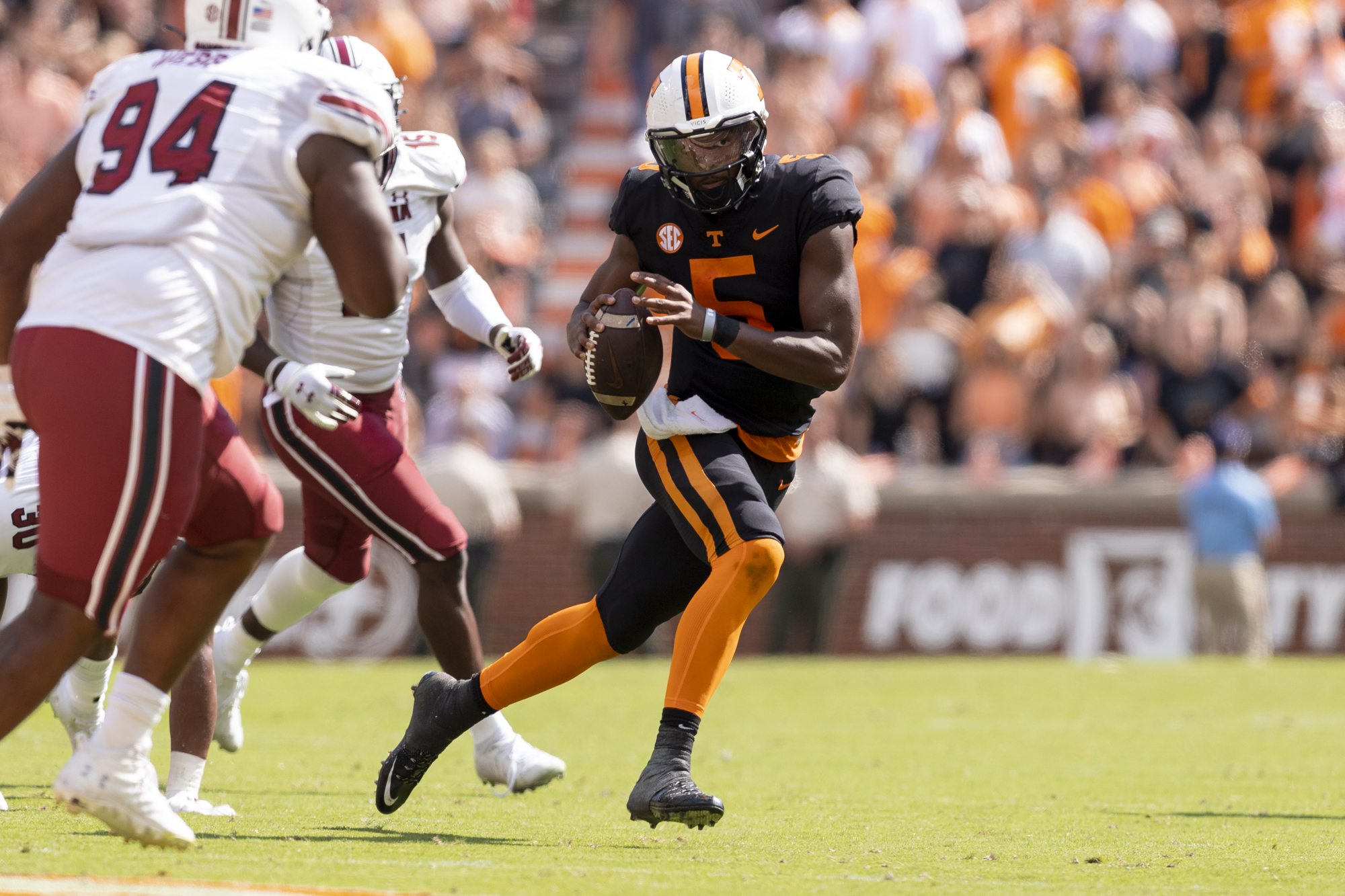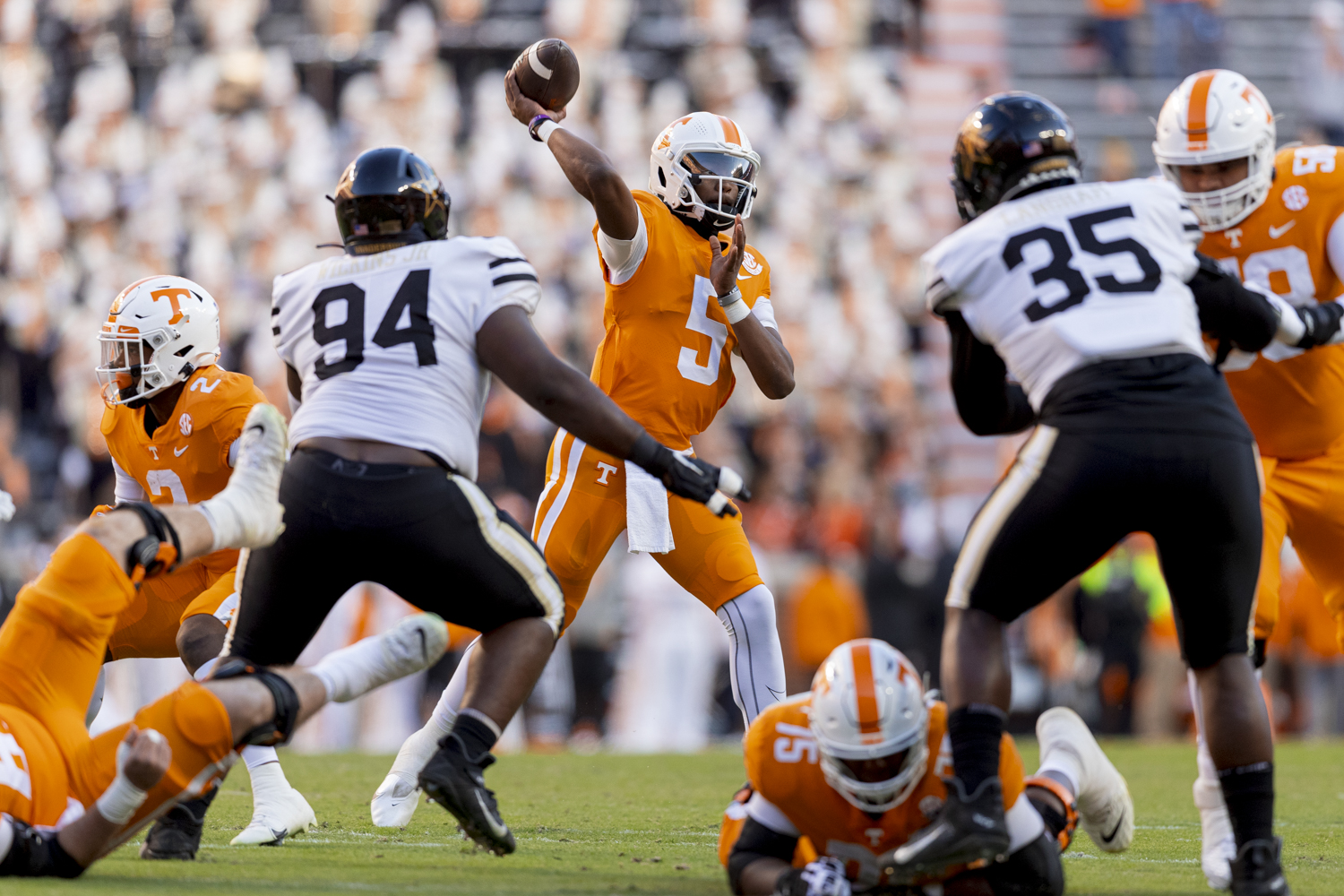August isn’t always for the rational. Hope will thrive on campuses across the nation this month, so long as health allows. Everyone is undefeated until August 27 (Nebraska/Northwestern in Ireland! Vanderbilt at Hawaii!). The rest of us will make it until a weekend beginning in just 27 days, when the Vols will help open the festivities on Thursday night.
There is always excitement this time of year. But this one feels unusually high, especially entering a coach’s year two. We’ve had our share of those in the last 15 years; they’re usually marked by some form of, “I think we’ll be better this year, and I’m curious to see how much.” But the Vols were better last year, and by much more than we imagined play-for-play. Tennessee is 18th in Athlon’s preseason Top 25, 11th in Phil Steele’s power poll, and ninth in SP+. I’m curious to see where the Vols land when the “official” polls come out soon.
So there’s normal August excitement, and then there’s this. And this is even a bit tempered by an incredibly successful year on campus across the board: men’s basketball flirted with their best season ever in KenPom, and baseball had their best regular season ever by just about any standard. We’re not overhyping Tennessee because we’ve been hyper-focused on football for too long.
This is, for sure, “I’m ready to get hurt again,” territory. But that’s the beauty of it! Hope is dangerous! And it’s great!
And sometimes, it pays off.
Rarely in the last 15 years, to be sure. But our question for the moment is, where does the current level of optimism rank among those others? How does your current confidence compare to where it’s been? And probably most important: where should it be?
Here are 10 moments from the last 15 years when we thought we might be onto something, ranked by overall confidence. This is my list; as always, your mileage may vary. But we’d love to know where your current confidence might fall on this list.
Top 10 “We might be back!” Moments of the post-Fulmer Era
Honorable Mention: 2009 Georgia
Not included, because in October 2009 you could tell yourself that we were really only rebuilding instead of doing whatever you want to call the last 15 years.
How long did it last? Through the rest of Lane Kiffin’s first season, until it became Lane Kiffin’s only season.
10. 2012 NC State
Take an anxious off-season after the 2011 loss to Kentucky, one of the most consequential outcomes of the last 15 years. Add in Cordarrelle Patterson and mix it all together in the Georgia Dome. Tennessee’s 35-21 season opening victory over NC State featured 524 yards of offense and tantalizing possibilities.
How long did it last? Two weeks later the Vols were back in the Top 25 for the first time since preseason 2008. We took a 20-13 lead over Florida midway through the third quarter in Knoxville, then stopped a fake punt on the ensuing drive. The Vols had 1st-and-10 at the Florida 47 with 4:45 to play in the third.
That’s how long it lasted. Tyler Bray was hit with intentional grounding on the next play and the Vols punted. From there, Florida had four plays of 30+ yards the rest of the way, including touchdowns of 80 and 75 yards, putting 24 points on the board in the last 18 minutes of play. Sal Sunseri’s defense became a huge question that never got answered.
9. 2014 South Carolina
The only reason this one isn’t higher is because of what happened earlier in the 2014 season, a little further down our list. I still think this is one of the most rewatchable games of the last 15 years, signaling the arrival of Josh Dobbs as Tennessee’s full-time quarterback for the next 2.5 years with 301 through the air and 166 on the ground. And it carries far less of the “yeah, but” quality that marks some of the other games on this list because they didn’t last as long.
How long did it last? The Vols went to 4-5 with this win, and though they came up short to eventual East champs Missouri, they did get bowl eligible, then rocked Iowa in Jacksonville. So in part, this one lasted until the 2015 Oklahoma/Florida sequence.
8. 2018 Auburn
A ranked road win for Jeremy Pruitt in year one. The Vols used the underdog playbook, getting turnovers and a defensive touchdown to secure a 30-24 victory over the Tigers. Not bad for a team that had lost its previous three meetings with ranked teams by 26 points.
How long did it last? After getting rocked by Alabama, the Vols lost a close one at South Carolina. But they rebounded to beat #12 Kentucky 24-7, moving to 5-5. It felt like we were one win away from a lot of things at that point…and then we lost to Missouri by 33 and Vanderbilt by 25.
7. 2011 Cincinnati
Another highly rewatchable game, and still one of the greatest individual performances by a quarterback at UT. Tyler Bray went 34-of-41 for 401 yards and four touchdowns, and Derek Dooley’s Vols beat Butch Jones’ Bearcats 45-23.
How long did it last? The next week in Gainesville, Florida scored on their opening drive, and Justin Hunter blew out his knee on Tennessee’s. Tyler Bray broke his thumb against Georgia two weeks later.
6. 2020 Missouri
Nothing sexy about the individual win, though Eric Gray and Ty Chandler combined for 195 on the ground. But this made eight wins in a row for the Vols (four of them by one possession over Kentucky, Missouri, Indiana, and South Carolina, he said ominously in hindsight…). Due to the pandemic, the Vols were in the Top 15 for the first time since 2007.
How long did it last? At least 30 minutes at Georgia the next week. The next 30 minutes could’ve been written up to Georgia’s talent. The next week vs Kentucky could not.
5. 2014 Week of the Florida game
The 2014 Vols smashed internet darlings Utah State 38-7 in the opener. They were game at Oklahoma for a while before falling. And they almost, almost got Georgia in Athens before falling 35-32. Meanwhile, Will Muschamp was on the hot seat: 4-8 in 2013, then a three overtime survivor against Kentucky, then lost 42-21 to Alabama. The game was in Knoxville, we checkered Neyland for the first time (eight years ago, hard to believe!), third down for what, all of that. We didn’t just think we were going to win. We thought we were going to exorcise. “Every star that could possibly be aligned is burning our shade of orange,” he wrote foolishly.
How long did it last? Florida won 10-9.
4. Right Now
A lot of what’s written up there is about hearts and feelings and the alignment of stars. A lot of what’s being said right now is about power rankings and efficiency (and five star recruits!). This team beat Missouri by 38 and South Carolina by 25 last year. They already got the ranked road win. And to some degree, their version of heartbreak is somewhat rightfully defined by conversations about officiating instead of questions about management. In SP+, the 2021 Vols were the second-best Tennessee team of the last 15 years. And yet, by our old standards, these Vols haven’t done anything yet. And it’s August, and we’re prone to think a lot of things. But one of those things I think: there’s more reason to believe in Tennessee right now than at any point in the last 15 years, save three:
3. 2013 Georgia & South Carolina
A Smokey Gray almost, followed by a ranked win for Butch Jones in year one after none for Derek Dooley. In the moment, with recruiting rankings backing it up, you had more reason to believe the program was on its way than at any point since Kiffin left. And even looking back, that South Carolina team is still the best team this program has beaten in 15 years (#11 at kickoff, #4 in the final poll). We’ll make that point a lot the first time this team gets a Top 15 win.
How long did it last? Justin Worley got hurt against Alabama the next week, sending true freshman Josh Dobbs into the fray. The 2013 schedule is maybe the hardest in program history, sending Dobbs against the East champs from Missouri and the almost-national champs from Auburn. Still, I think these good vibes lasted until the Vanderbilt game, when bowl eligibility was frustratingly lost.
2. 2015 Northwestern
The clear pinnacle of good football vibes lasting a long time. When the Vols torched #15 Northwestern 45-6 in the Outback Bowl, it was our largest margin of victory over a ranked team in 25 years. And more than anything, with the Vols bringing almost everyone back, it set aside the heartbreak of early 2015, and set our sights squarely on championship aspirations for 2016. This was a fun eight months to be a Tennessee Vol.
How long did it last? See below, but I can assure you it stopped being as much fun about 75% of the way through the Appalachian State game.
1. 2016 Florida/Georgia
The clear pinnacle of the last 15 years, a height matched only by its fall. Six years later, the “yeah, but” of two otherwise incredibly rewatchable games is an inescapable part of their story. Still, these games are the champ until Tennessee beats someone more meaningful. And when the Vols do finally escape the wilderness, perhaps we can look back on these two weeks much more fondly, and appreciate them for what they are.
How long did it last? There was enough grace for 351570 turnovers the next week at Texas A&M, and even facing one of the best defenses of all time from Alabama. But the loss at South Carolina cost the Vols the East, and the loss at Vanderbilt cost the Vols the Sugar Bowl. And that meant the cost of losing was ultimately higher than the joy of winning, leaving 2016 like many other years on this list: some great individual moments that could never quite be strung together enough to make the memories of great seasons.
Where would you put right now on this list?
